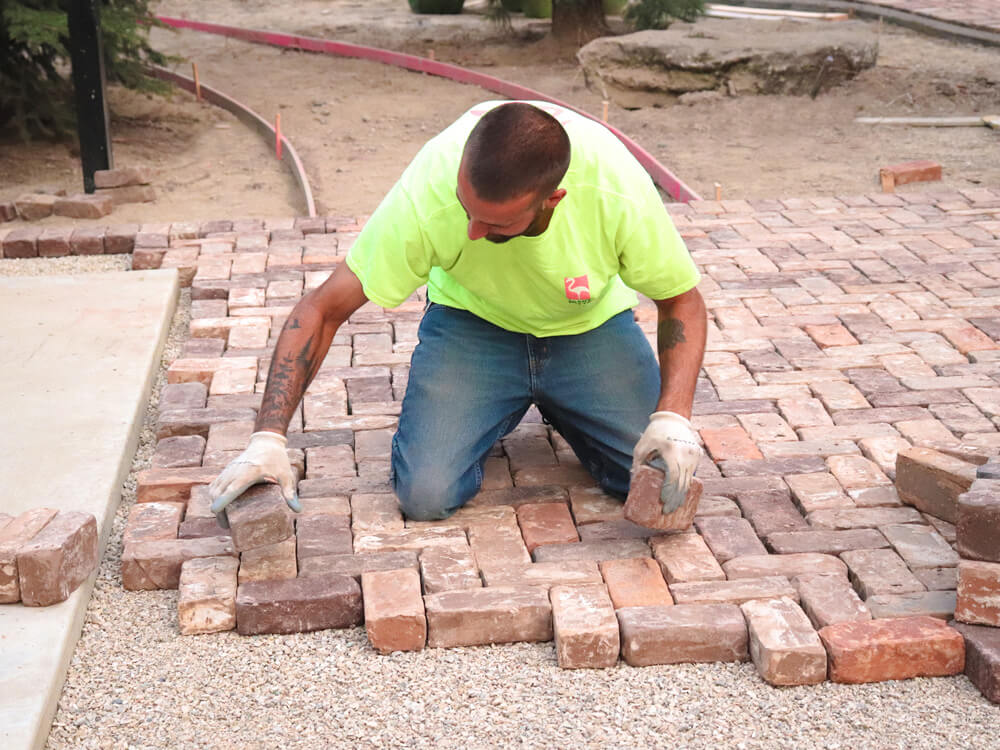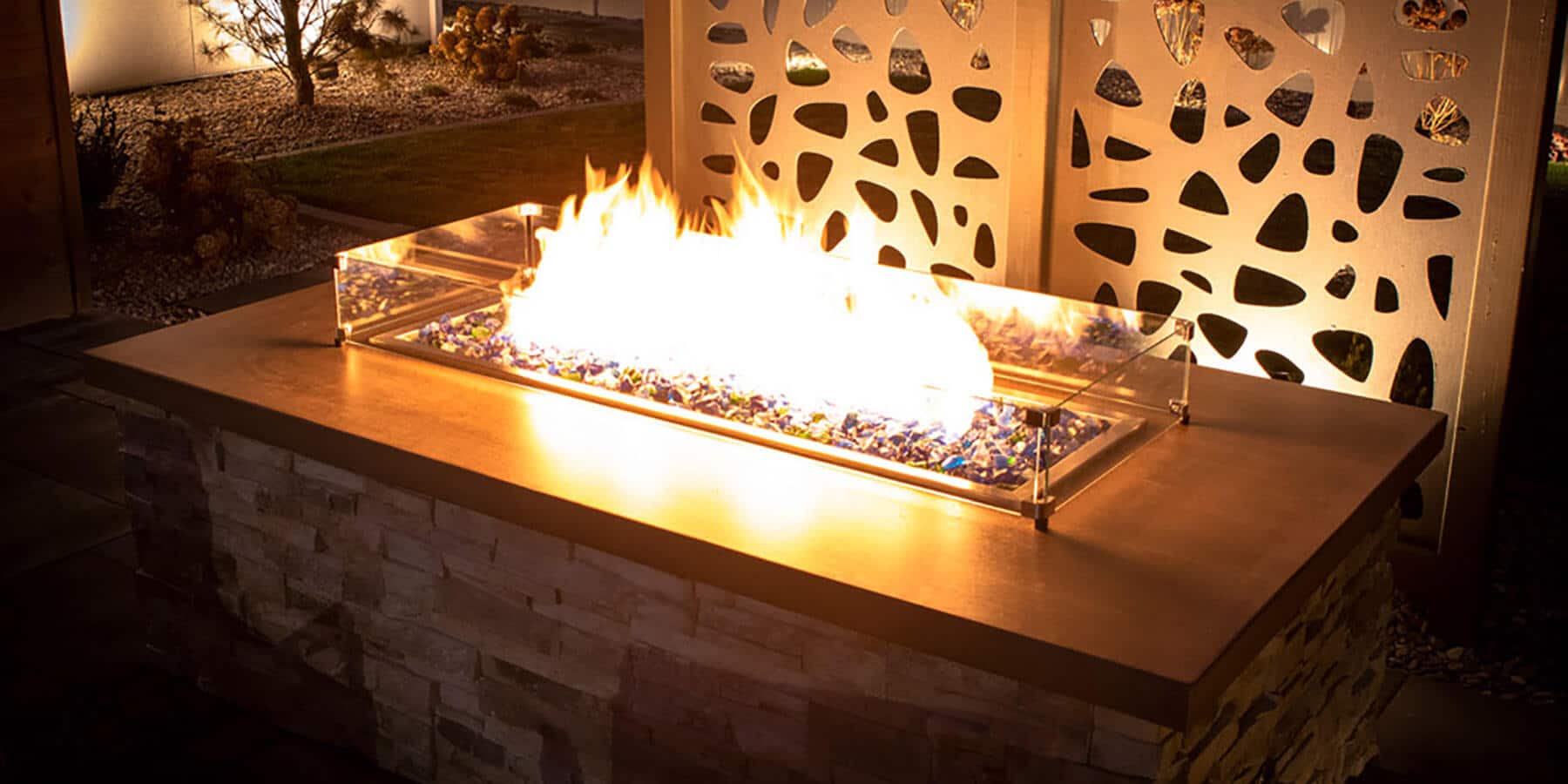Modern landscapes encapsulate clean lines, geometric shapes, simplicity, and repetition. These landscapes are all about functionality and differ from traditional gardens as the yard is treated as a space to “live” or visit rather than a space to hobby garden or experiment.
The green thumb gardeners might wonder why someone would desire a yard like this, but modern landscapes are increasingly on the rise. Many homeowners have sent their inquiries to our construction department in search of a modern oasis. Christina Modesitt and Jake Koppes—two Franz Witte designers—sat down and gave their thoughts on modern landscaping.
When referencing the term “modern” it is important to differentiate between two design styles that often get confused: Contemporary and mid-century modern. Contemporary is all about current trends and evolves to reflect what is popular. It is not influenced by a specific time period.
“A lot of contemporary landscaping is moving towards native and pollinator-friendly plants,” Koppes said. “People are more cautious of their carbon footprint and desire very low maintenance yards.”
Mid-century modern is influenced by eras within the twentieth century (1950s – 1970s) and the Modernist movement. This style is usually what homeowners mean when they want a modern landscape because it has very distinguished characteristics.
There are similarities between the styles as both tend to be minimalistic and low maintenance. They also appreciate open lines of sight and defined shapes. For the sake of clarity, the remainder of this article discusses mid-century modern.
Modesitt made a comment as to why she believes modern landscaping is popular right now, “It’s so simple and low maintenance. There’s a value in being able to make beauty out of simple shapes while making it unique.”
There is also a challenge in that because this style lacks variety. Negative space is just as important as positive space, and unnecessary decoration is not practical. Repetition and spatial relation have a big impact on an area. Overcrowding with plants does not belong as they take away from the tidiness of the overall aesthetic.
“Proportions are important. Plantings on a plan view can look totally off in person. You have to think about [plants] in the real world and the space they take up,” Koppes said. “The planting layout is more important than the plant itself. I’m always trying to find new plants and branch out with my cultivars. I like using different Pennisetum grasses over the basics.”
Modern landscapes also favor building materials such as concrete, wood, and metal. During the mid-century, materials needed to be easily accessible and affordable when building for the masses. These industrial mediums literally paved the way for crisp lines and neutral colors. Natural stone and earthenware distract from this style due to their organic form.
Modesitt said she likes to incorporate pour-in-place concrete pavers, soft grasses, and a pop of color to her designs. Color adds a layer of visual interest because shapes in this style are so simple. One bold color really adds to the element of modern but be wary of incorporating too many loud colors at once.
“Colors depend on the owners and what they prefer. Usually yellows, blues, and reds—primary colors, really—and a lot of green,” she added.


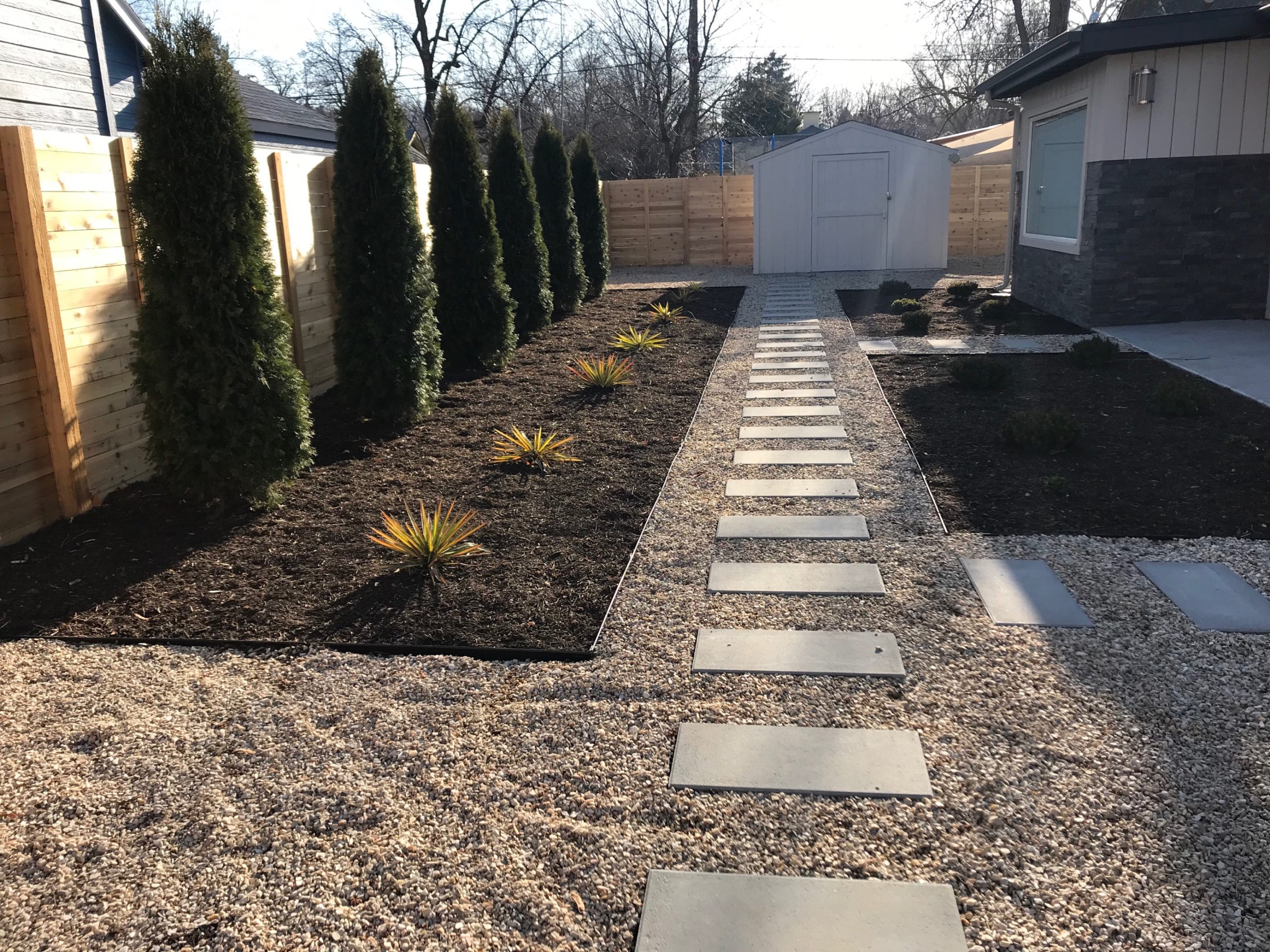
Footnote: Design by Christina Modesitt
With all these elements in mind, mid-century modern landscaping is all about the relationship between the landscape and the house. The flow between the two should feel seamless. The landscaping is intended to complement the home’s architectural structure. Geometric shapes within the house should inspire those on the outside. Clean lines create an inviting space to sit outside and enjoy the open air. Keeping the yard low maintenance alludes to relaxation without the distraction of plant debris or unnecessary clutter.
“The outside living space should match the inside. It’s an extension of the house. I try to pull inspiration from the inside of the home,” Koppes said.
For example, pavers on the patio could match the tiles in the kitchen; a splash of color outside could match the color of the living room’s accent wall; external walls and right angles could dictate planting beds.
As trends are always shifting and evolving, how has mid-century modern landscaping withstood the test of time? It is all about keeping the balance of simplicity and function. Modern landscapes offer a fresh feel because of their minimalism. The pandemic drove the desire for convenience, and many homeowners’ relationship with the landscape changed. As more people spent their time at home, the landscape became the place to escape, thus, driving the desire for an extended outdoor, low-maintenance “room” to hang out and entertain. But what better way to create a space like this than by adding aesthetic? Mid-century modern encapsulates every aspect of these goals.
“It’s all about cleanliness and less clutter. It doesn’t look nearly as intimidating as a cottage garden,” Koppes said.
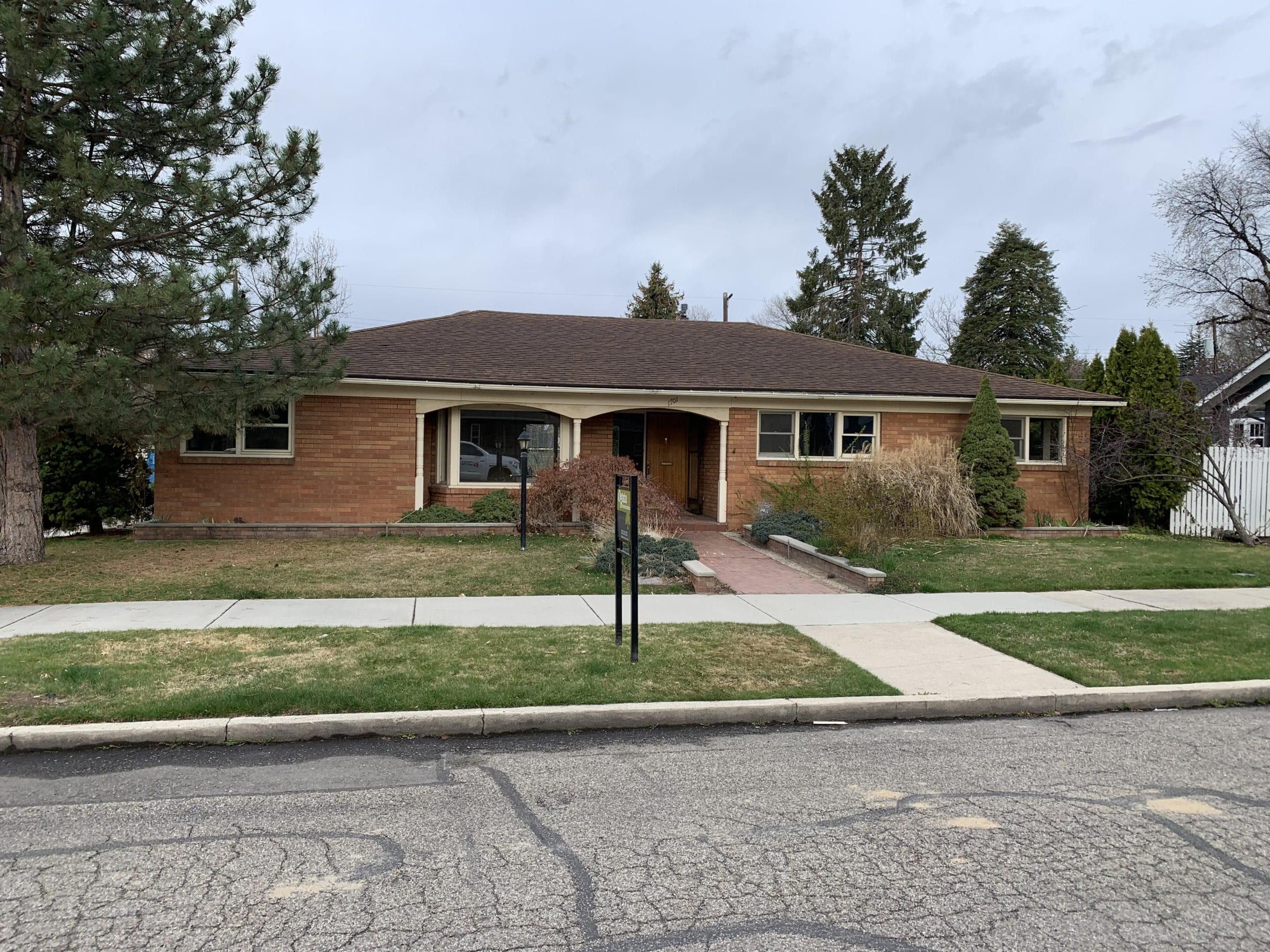

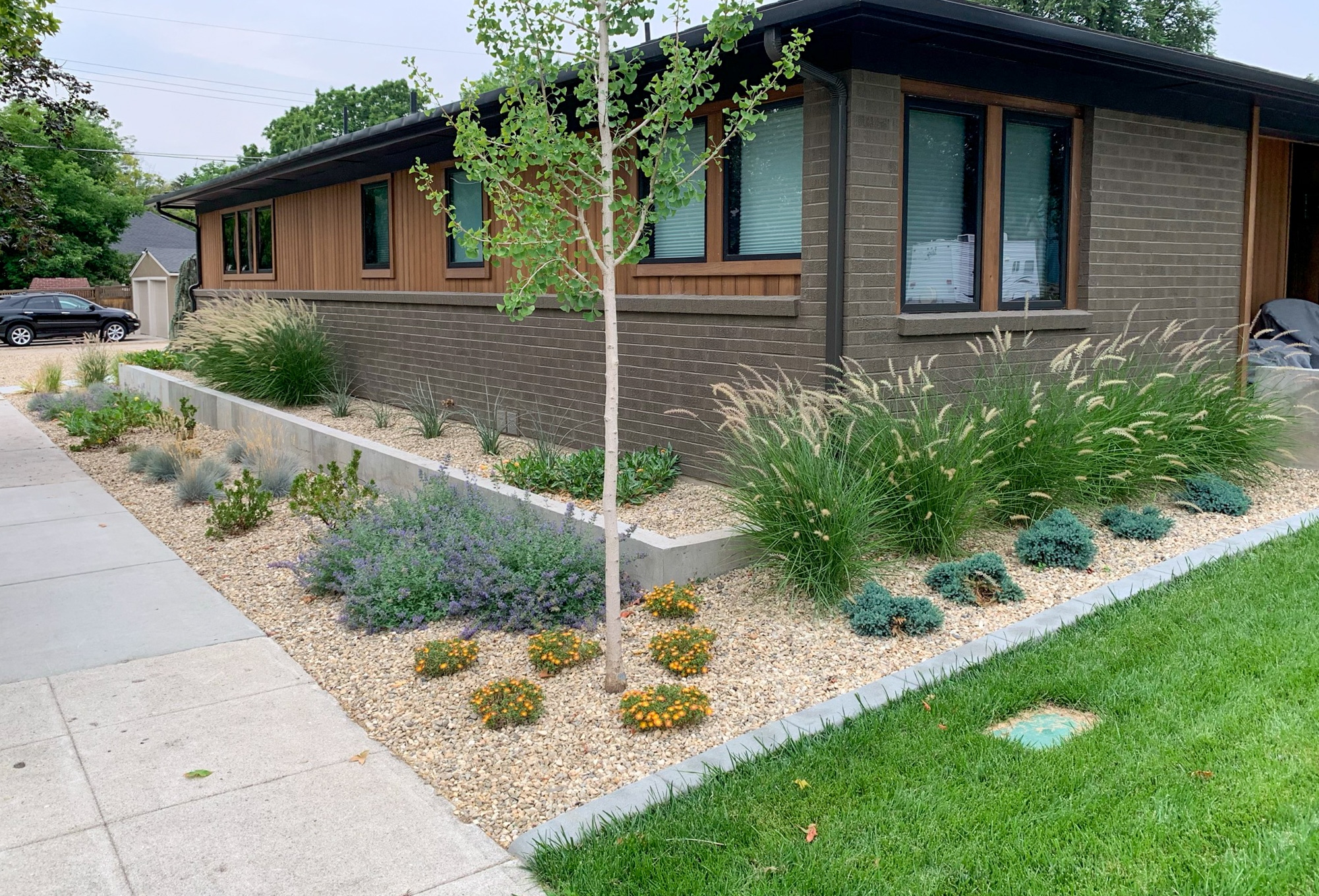
Footnote: Design by Jake Koppes
By Riley Rehberg

